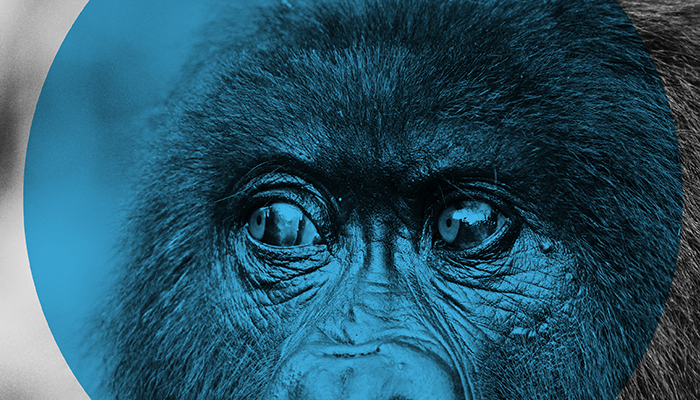
There are many theories as to why there is such variation in the eye shape and coloration of humans and primate eyes – but little actual evidence. And so, researchers from the National University of Singapore, together with collaborators from Republic Polytechnic, the University of St Andrews and Leiden University, set out to uncover the most likely explanation (1). How? Using PAT-GEOM, researchers measured the width-to-height ratio, sclera-size index, brightness of the iris, conjunctiva, and sclera, and hue of the iris in photographs of 77 anthropoid primate species. The photographs used for this study came from multiple sources including publicly available images, photographs taken in Africa and Asia by professional wildlife photographer, Mogens Trolle, and photographs taken by Mariska Kret in the Netherlands.
Among other findings, the team discovered that conjunctival pigmentation is related to the differences in quantity and quality of light in the environment to which each species is native. Additionally, the results indicate that the further a primate species lives from the equator, the bluer/greener their irises become. In short, as blue light becomes scarce as primates move away from the equator, irises that scatter more blue light into the retina appear to offer an advantage. Researchers believe that the regulation of circadian function – which relies on blue light stimulating retinal ganglion cells – lies at the heart of this finding.
Juan Olvido Perea-García, one of the lead researchers, says, “Before this study, most of what I had read on iridal coloration in humans had to do with sexual selection. Now, I am more convinced that ecology must play an important role.” García also comments on how the findings of this study link to human behavior, proposing that individuals with bluer eyes are more likely to stay energetic and positive during the winter months thanks to better tuning of circadian rhythm. Supporting this suggestion, an observational study found that individuals with blue eyes suffering from seasonal affective disorder and living far from the equator were less depressed and fatigued than those with dark eyes (2).
Although Perea-García says that different colored irises may not have a significant effect on visual function, he believes that further research could explain interindividual variation in visual performance. By examining these trends further, he says, ophthalmologists could gain a better understanding of specific eye morphology that might lead to the recommendation of better treatments tailored to individual needs.
References
- JOP García et al., “Ecological factors are likely drivers of eye shape and colour pattern variations across anthropoid primates,” Sci Rep, 12, 17240 (2022). PMID: 36243745.
- N Goel et al., “Depressive symptomatology differentiates subgroups of patients with seasonal affective disorder,” Comparative Study, 15, 34 (2002). PMID: 11816051.
